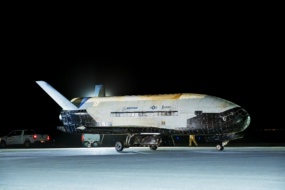It’s time for the four-year-old Space Force to move out of the establishment phase and work through what it really means to conduct military operations in orbit, including translating 30,000-foot doctrine to the tactical level, according to two former defense officials.
“We’re at a point where the Space Force has finally got its organizational structure to a new and advantageous steady state,” Lt. Gen. John Shaw, the former deputy commander of US Space Command who left service last year, told Payload. “Now it’s just a matter of getting roles, responsibilities, and inter-organizational integration in sync.”
What’s next: Kari Bingen, director of CSIS’ Aerospace Security Project and former principal deputy defense under secretary for intelligence, said Guardians need to think about how military operations on Earth translate to space.
One example she gave was the “target folders” operators at US Central Command have built about compounds or terrorist targets in the Middle East during decades of conflict, and said a similar system is needed for assets of interest in orbit, such as Russia’s Luch 2.
Some other considerations for the national security space community this year include:
- How to implement the Defense Department’s recent rewriting of the classification policy for space programs.
- How doctrine can be more fully integrated in the service and begin influencing Space Force operations.
- How to approach on-orbit servicing and next steps now that Space Systems Command selected Northrop Grumman’s fuel port as a standard design.
Commercial alliance: It’s also critical for the Defense Department to figure out how to work better with commercial leaders—and leverage their non-taxpayer funded innovation and R&D, Bingen said. It’s a question NASA answered nearly two decades ago for the civil space community, when it started its commercial partnerships to launch cargo and people to space—something Bingen called “a fascinating case study” for commercial partnerships.
“I think part of it was out of necessity, but it was foresight on the part of NASA leaders at the time to say we want to put in place a strategy with a strong commercial component,” she said. “I think DoD is still wrestling with that. Is buying commercial services an augmentation and an afterthought, or is it truly integrated into your toolkit of capabilities from the outset?”
Threat landscape: Iran and North Korea are both ramping up their military space programs—Tehran launched three satellites last month, and Pyongyang successfully put its first spy sat into orbit in November. But Shaw stressed that China will still be the top focus for the US national security space community for the foreseeable future.
“North Korea and Iran, we can’t ignore them,” he said. “But in the full cislunar environment and across all mission sets, China is really the only one that can engage us across that entire spectrum”
+ICYMI: Check out last week’s dispatch on civil space policy in 2024.




